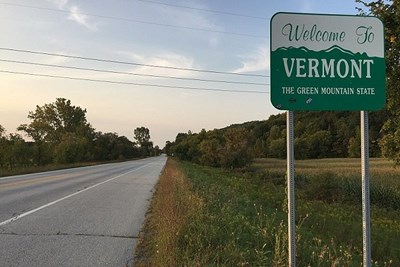
For years, liberal Vermont media and politicians have condemned the state's police and legal system as "systemically racist" using flawed statistical analysis of incarceration rates of blacks. Increasingly, this appears deliberate.
A University of Vermont "study" was the fulcrum to slander Vermont, "suggesting" that racist animus explained disparities in police stops, arrests, and incarcerations of black and Hispanic drivers. The study's author, Stephanie Seguino, measured police bias by comparing traffic stops of black and Hispanic drivers to the Vermont general population, without regard to driver residence. Seguino's supposedly revelatory "research" has likely undermined police efforts arresting inner-city gangs transporting narcotics to Vermont — using an out-of-state numerator over an in-state denominator.
The left asserts that Vermont has a higher incarceration rate of blacks than its underlying population (true) and thus is "systemically racist" (patently false, even absurd). When Vermont police arrest black or hispanic out-of-state fentanyl dealers, of course the incarceration rate of blacks will increase relative to black Vermonters — that is drug interdiction, not racism.
Seguino's study ignores origin, focusing on "stop rates by race compared to racial shares of the population." This shoddy research was leveraged by an uncritical Vermont media to slander good police officers.
As Thomas Sowell explains in Discrimination and Disparities, American progressivism crafted the eugenics movement — genetic determinism. Marx advocated economic determinism, defined by class. Today's Progressives embrace an equally dogmatic race determinism, which Sowell labels a "seemingly invincible fallacy" and "a non sequitur underlying the prevailing social vision of our time."
Professor Seguino's work is just such a non sequitur. Sowell specifically condemns such "disparate impact" statistics as ideologically motivated by a "political crusade" to create a "presumption of discrimination."
[S]tampedes toward one-factor explanations do not exempt even the leading intellectuals of an era ... [from] a default setting in many social theories that regard the absence of equality in outcomes as automatic signs of some sinister influences which have prevented this natural equality from taking place[.] ... The historic consequences of treating particular beliefs as sacred dogmas, beyond the reach of evidence or logic, should be enough to dissuade us from going down that road again — despite how exciting or emotionally satisfying political dogmas and the crusades resulting from those can be[.] (pp. 26–8)
A 2020 study by the Justice Center concluded, "Black people who are identified as residents of other states make up a small number but a larger proportion of non-residents within Vermont corrections populations." Additionally, 19% of drug offenders were black out-of-staters, versus 5% whites (p. 31). Vermont has seen a 33% annual increase in opioid deaths.
Vermont Public Radio noted the absence of out-of-state statistics in 2018:
Joy's next study is looking at something we mentioned earlier: the question of how many African-American inmates are residents of Vermont, versus from out of state[.] ... And according to that new report from the Department of Corrections, just 1.6 percent of Vermont's prison population in 2017 were black people from out of state.
But Vermont is only 1.4% black — "just 1.6%" is "just" 114% of Vermont's black demographic!
A 2019 study, commissioned to assess the conduct of the Bennington, Vermont Police Department, noted the shortcomings in Seguino's work:
[Seguino's] study ... was seriously flawed and its conclusions do not stand up to academic rigor. First, the data used included multiple ticket/warnings for events. This means that if a driver received a warning and a ticket at one stop, the study counted it as two separate stops. And if a search was conducted, two separate searches. ... [I]n the data provided for our study, we find that in 1,000 of the 3,235 stops, the drivers had residences out of state. An additional 246 drivers had residences in Vermont but outside of Bennington County. This means that one-third of the drivers stopped had no relationship to the demographics of Bennington County.
The opioid crisis explains Vermont's spike in black incarcerations, yet Seguino's recent "updated" report again avoids state-of-origin data. Significantly, she concedes ,"Given the low percentages of people of color in Vermont, even a small amount of missing race data can distort results."
Sowell warns:
Two of the monumental catastrophes of the twentieth century — Nazism and Communism — led to the slaughter of millions of human beings by their own governments, in the name of either ridding the world of the burden of "inferior" races or ridding the world of "exploiters" responsible for the poverty of the exploited. While each of these beliefs might have been testable hypotheses, their greatest political triumphs came as dogmas placed beyond the reach of evidence or logic[.] ... Discrimination as an explanation of economic and social disparities may have a similar emotional appeal for many. (pp 27–8).
In Vermont, this "emotional appeal" of hate is clouding common sense and evidentiary analysis — dangerously undermining police; opening a wide gate to drug-trafficking; threatening public safety. Reality defeats dogma, especially in Vermont.